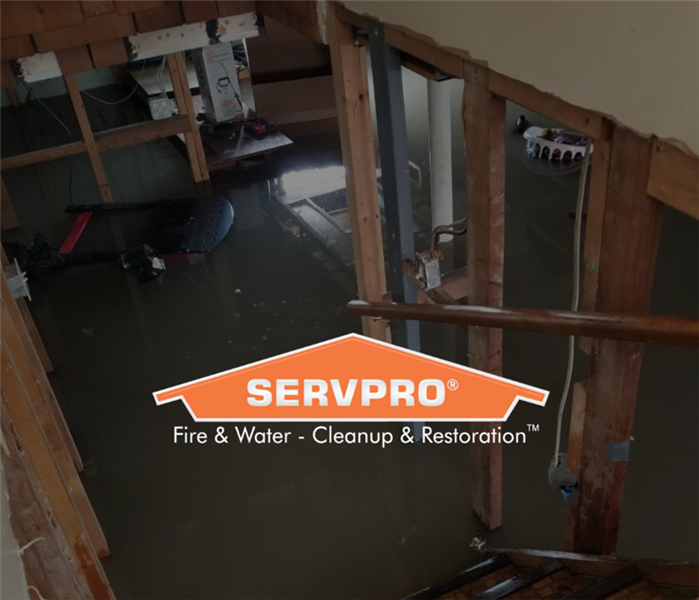How To Prevent Flooding In Your Basement?
2/13/2022 (Permalink)
 basement stairs that lead to a flooded basement with a black chair floating and a full white clothes basket floating. SERVPRO logo over the photo.
basement stairs that lead to a flooded basement with a black chair floating and a full white clothes basket floating. SERVPRO logo over the photo.
A basement is a homeowner’s haven. After all, it is usually where the gym, theatre, and game room are. Or, if nothing else, it is probably a storage area for all the memorable items you so cherish. This is exactly why the thought of your basement flooding can leave you in a flurry of panic. Whether the water flows in through the walls, breaks through the floor’s foundation, or is a result of a mighty storm, you need to act – fast. Here’s how you can prevent flooding in your basement:
? Unclog The Gutters
The purpose of the gutters is to accumulate water and prevent it from entering your home.
However, if they’re already full of leaves, branches, debris, or other solids, they can’t perform their function well. Or at all.
Unclog the gutters, and the water will accumulate within them to be redirected away from the home and certainly not in your basement.
? Position The Downspouts Correctly
Since we’re talking about gutters, the next logical step is obviously the downspouts.
To prevent flooded basements, you need to ensure the water does not drip close to the foundation of your home. For this, use extended downspouts that drain the water at least 3 feet away from your home’s foundation.
Use troughs or durable extensions to serve the purpose.
? Ensure Adequate Ground Grading
This step is crucial.
Often basements flood due to the wrong leveling of the ground. Remember, the ground is supposed to be sloped away from your home to avoid water draining into the foundation.
Check the grading of your home. If inadequate, begin the re-grading process immediately, especially before the arrival of monsoon.
? Seal The Basement
Sometimes water comes into the basement from a place least expected – the walls. Yes, let that sink in (or don’t; after all, sinking is what we’re trying to prevent here).
The seepage can be due to cracks in the foundation. Seal them with caulk or weatherstrip. Or, in case of wide, deep cracks, hire an expert for the task.
? Install A Sump Pump
Water is uncontrollable. Despite implementing all the above changes, sometimes it simply finds a way into your basement.
For such situations, you need a Plan B: A Sump Pump.
Consider the pump as a backup water suction pump. In case water begins accumulating in your basement, simply use the device to pump the excess water outside.
Takeaway
A flooded basement can send even the most confident homeowners in a state of helplessness.
But if you follow the above-mentioned tips, then you’ve got nothing to worry about.
Or, if the task seems too complex for a DIY, let SERVPRO, the #1 choice in the cleanup and restoration industry, help you out.
Give us a call for your quote today at 706-965-7378 From Rising Fawn to Lyerly, Trenton to Rock Bridge, Ringgold to Lafayette, or anywhere in between, we take pride in serving your neighborhood! We are a locally owned and operated franchise with employees dedicated to providing a quality customer experience!





 24/7 Emergency Service
24/7 Emergency Service